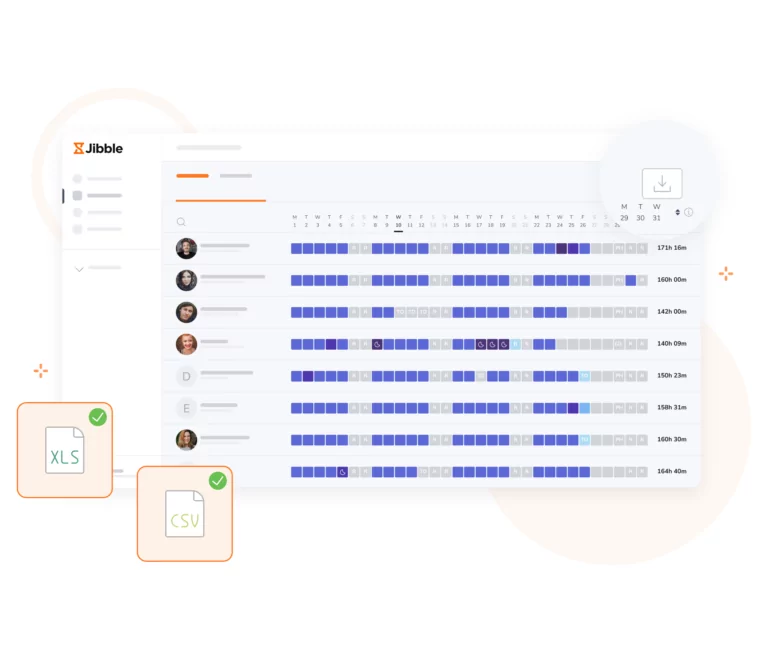7 Time Tracking Best Practices for US Universities
Are you ready to learn how time tracking and attendance solutions can transform your US university? Time tracking and attendance solutions are the ultimate tools to revolutionize your processes, skyrocket your efficiency, and create a better learning environment for your students and faculty. And I’ve got just the time tracking best practices for US universities to help you get started on the right track.
In this article, you will discover the amazing benefits of implementing time tracking and attendance solutions that you can apply as a US University Administrator. By adopting these solutions, universities can transform their operations, enhance administrative processes, and create a more productive and effective learning environment for students and faculty alike.
Let’s get straight into it!
Tip 1: Increase Student Retention with Accurate Attendance Tracking
“Attendance matters not only because it enables the transfer of content knowledge within a particular course or student activity, but attendance provides students with access to other, noncontent-specific contextual information, resources and relationships that can positively impact their knowledge and sense of belonging.” From How Student Attendance Can Improve Institutional Outcomes by MacMillian Learning.
Keeping track of student attendance has many benefits for students and professors. For students, they learn to be responsible, join class activities, and see their attendance history. For professors, they see how often students miss class, find out which students need more assistance, and offer support to keep them in school.
Using software or mobile apps for attendance can make the process faster, simpler, and more accurate. These tools let you record and track attendance data in real-time, so you can notice any patterns or changes, make smart choices, and take action to improve student engagement and success.

Photo by RDNE Stock project on Pexels
Tip 2: Make Attendance-Taking Easy and Fun with Innovative Features
Innovative features and technologies of attendance software can streamline the attendance-taking process. Biometric identification, QR codes, RFID technology and Geofencing can simplify and automate attendance tracking in your university.
These innovative features make attendance taking easy and efficient and add a touch of fun to the overall experience for students and faculty members.
- Biometric identification technology: Facial recognition can be used to verify the identity of students and faculty members. This eliminates the need for manual or paper-based methods, such as roll calls, sign-in sheets, or ID cards. It also prevents fraud, such as proxy attendance or impersonation. A kiosk can be set near the entrance or people can even use an app on their phone.
- QR codes: Two-dimensional barcodes can be used to create personalized QR codes for students and faculty members, which can scan to mark their attendance on an attendance app. Reduce the need for filling out forms or entering data manually. It also adds interactivity and engagement to the attendance-taking process.
- Contactless NFC or RFID tags: These can be embedded in student or faculty ID cards, which they can swipe or tap on readers to record their attendance. This speeds up the attendance-taking process, as it does not require any input from the user.
- Geofencing: This time tracking and attendance phone app feature allows you to create a virtual boundary around a certain location. It ensures students and staff are in the right place at the right time. And it reduces attendance fraud where students sign in for other students who are not actually there.
Tip 3: Optimize Classroom Time and Resources with Smart Scheduling
You want to make the most of your classroom time and resources but also face challenges such as conflicting schedules, limited space, and changing needs. How can you manage these issues and ensure your academic activities run smoothly and effectively?
One way is to use smart scheduling, which involves time tracking and scheduling tools that efficiently allocate classes, labs, and other academic activities. Plan, organize, and coordinate your schedules in advance and make adjustments as needed.
Some of the benefits of using these tools are:
- Optimizing space use by assigning rooms and facilities based on availability, capacity, and suitability.
- Improving operational efficiency by reducing error-prone administrative tasks like manual scheduling, data entry, or paper-based records.
- Sharing schedules and updates with students, faculty, and staff prevents confusion, errors, or time conflicts.
Tip 4: Gain Insights into Student Behavior and Performance with Data Analytics
You want to understand your students better but face challenges such as large class sizes, diverse backgrounds, and varied learning styles. Using data analytics, you collect, process, and visualize data from various sources, such as time tracking and attendance systems, grades, surveys, and feedback. Some benefits of using data analytics are:
- Identify patterns and trends in student attendance, such as attendance rates, absences, lateness, or participation.
- Use data from attendance apps to personalize learning and student success initiatives. Attendance apps can track students’ engagement, participation, and progress in real time. This can help you understand their learning preferences, strengths, weaknesses, and goals better. You can then design learning activities and interventions that suit their needs and interests.

Photo by Yan Krukau on Pexels
Tip 5: Simplify Faculty and Staff Time Management with Automated Processes
You want to simplify your faculty and staff time management, but you also face challenges such as complex work schedules. How can you manage your faculty and staff time effectively and efficiently?
Implement time tracking systems for faculty and staff, which involve using software or apps to record, monitor, and report work hours and leave taken. Time tracking systems automate processes, such as:
- Tracking work hours: Capture accurate and reliable data on the hours worked by your faculty and staff, whether full-time, part-time, hourly, or remote.
- Managing leave requests: Simplify requesting, approving, and tracking leave for your faculty and staff.
- Facilitating payroll processing: Integrate your time tracking data with your payroll system.
Tip 6: Implement Time Tracking and Attendance Systems Quickly and Smoothly
You want to implement time tracking and attendance systems in your US university, but you also face challenges such as resistance to change, technical issues, and user feedback. How can you implement these systems quickly and smoothly?
One way is to follow these guidelines and best practices for successfully implementing time tracking and attendance systems in US universities:
- Communicate effectively: The purpose, benefits, and expectations of the new systems should be explained to students, faculty, staff, and administrators.
- Train adequately: Train your users on how to use the new systems, such as how to scan QR codes, swipe RFID cards, or use facial recognition. Provide clear instructions, demonstrations, and practice sessions. Provide ongoing support, such as FAQs, manuals, or help desks.
- Adopt strategically: Roll out the new systems gradually and strategically, such as by piloting them in a few classes or departments before releasing them out to the whole university. Monitor the performance, usability, and satisfaction of the new systems.
Tip 7: Integrate Time Tracking and Attendance Data with HR and Payroll Systems
You want to integrate your time tracking and attendance data with your HR and payroll systems, but you also need to reduce errors. How can you integrate your data effectively and efficiently?
One way is to use software or apps to connect your time tracking and attendance systems with your HR and payroll systems. Synchronize your data in real-time, automate your processes, and generate your reports. Some advantages of integrating your data are:
- Streamlined processes: Eliminate manual or paper-based tasks, such as entering data, calculating hours, or issuing paychecks.
- Improved accuracy: Avoid data inconsistency, duplication, or errors, such as mismatched names, dates, or amounts.
- Cost savings: Save money on labor, materials, and resources involved in managing your data.
Some benefits of real-time data synchronization and reporting are:
- Decision-making: Access up-to-date and accurate data on your faculty and staff performance, productivity, attendance patterns, and trends. Analyze your data to identify strengths, weaknesses, opportunities, or threats.
- Compliance: Comply with Fair Labor Standards Act (FLSA), state, and university policies and regulations regarding labor laws, tax laws, or accreditation standards. Data logs can also provide evidence and documentation of your compliance.
Benefits of Adopting Time Tracking and Attendance in US Universities
I have shared the benefits of implementing time tracking and attendance solutions in US universities in this article. I have also shown you how these solutions can help you overcome the challenges of managing university operations and improving the educational experience.
By adopting these best practices, you can:
- Increase student engagement and retention by tracking and rewarding their attendance, participation, and performance.
- Maximize resource allocation by assigning and using rooms, facilities, and equipment based on availability, capacity, and suitability.
- Improve data-driven decision-making by collecting, analyzing, and reporting data on student behavior, performance, attendance patterns, and trends.
- Streamline administrative processes by automating and integrating time tracking and attendance data with HR and payroll systems.
If you are a US university administrator, I urge you to embrace these best practices to transform your university with time tracking and attendance solutions. You will not only save time and money, but also improve the quality of education and the well-being of your university community.



